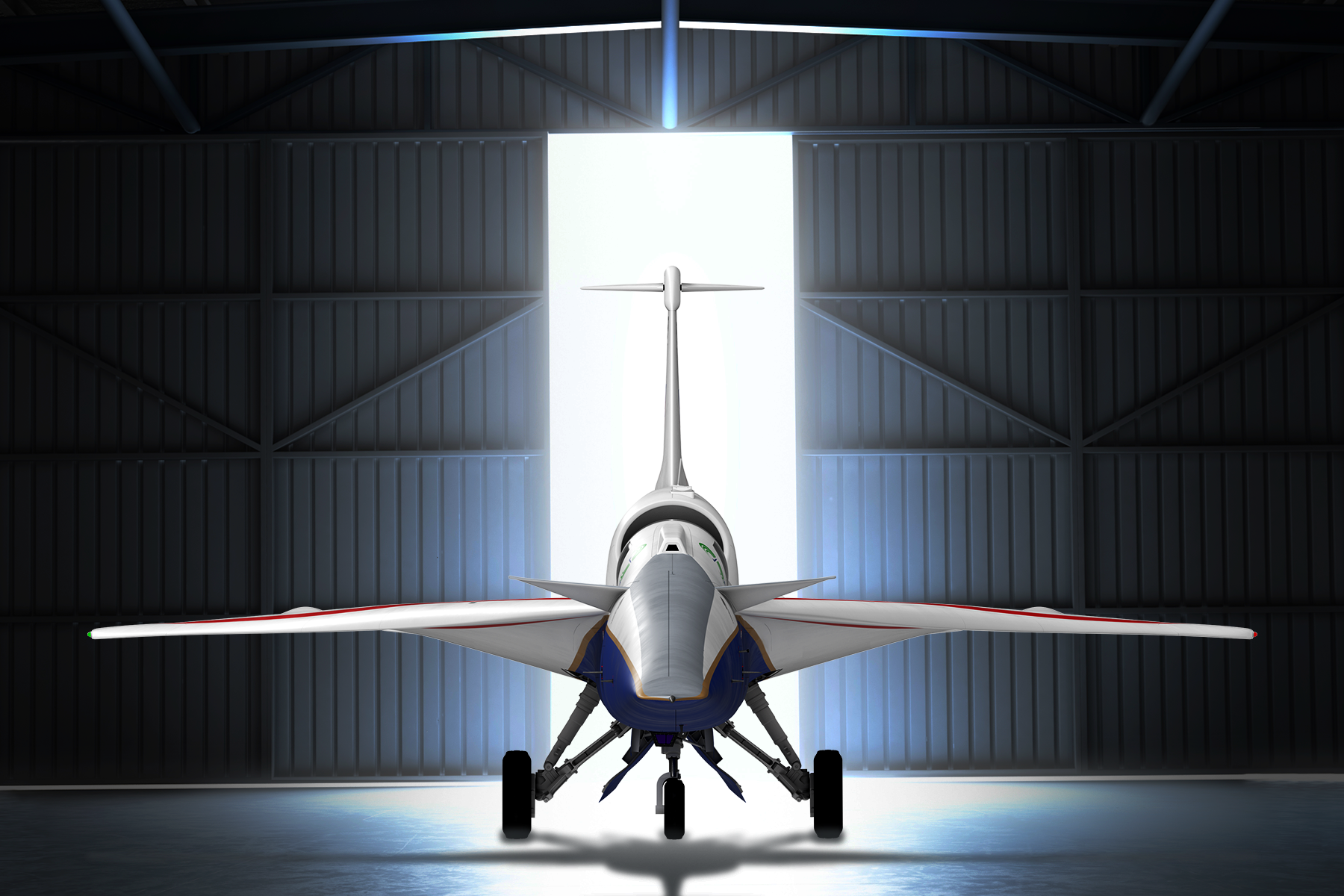
Nasa has unveiled a one-of-a-kind quiet supersonic aircraft as part of the US space agency’s efforts to enable commercial supersonic flight. On Friday, NASA unveiled the X-59, an experimental aircraft that is expected to fly at 1.4 times the speed of sound, or 925 mph (1,488 km/h), during a joint ceremony with Lockheed Martin Skunk Works in Palmdale, California.
The aircraft, which measures 99.7 feet (30.4 meters) long and 29.5 feet wide, has a thin, tapered nose that accounts for nearly a third of its total length—a feature designed to disperse shock waves that would normally surround supersonic aircraft and cause sonic booms.
Engineers attempted to improve the aircraft’s supersonic capabilities by positioning the cockpit nearly halfway down the length and removing the forward-facing windows found in other aircraft.
At Friday’s launch event, NASA’s deputy administrator, Pam Melroy, explained the configurations: “We made that decision to make it quieter, but it’s an important step forward in and of itself in terms of advancing aviation technology.”
“[With the] huge challenge [of] limited visibility in the cockpit, the team developed the external vision system, which really is a marvel of high-resolution cameras feeding an ultra-high-resolution monitor.”
Melroy added: “The external vision system has the potential to influence future aircraft designs where the absence of that forward-facing window may prove advantageous for engineering reasons, as it did for us.”
X-59 will fly over several cities in the United States and collect public feedback on the sound it generates
The aircraft also has an engine mounted on top and a smooth underside to prevent shock waves from forming behind it, causing sonic booms.
Nasa said the X-59 will make its first flight later this year, followed by its first quiet supersonic flight. The agency added that once test flights are completed, the X-59 will fly over several yet-to-be-determined cities in the United States and collect public feedback on the sound it generates.
Commercial supersonic travel over land has been banned in the United States for the past 50 years due to public concerns about explosive sonic booms that could be heard from miles away.
Bob Pearce, NASA’s associate administrator for its aeronautics research mission, addressed the ban at Friday’s launch event, saying: “Grounded flight testing showed us it was possible to design an aircraft that would produce a soft thump instead of a sonic boom. Is that thump quiet enough to allow supersonic flight over land? Our laboratory studies would say yes, but the real answer can only be found by engaging the people who would hear it during daily life.”
Pierce stated that the X-59’s role would be to “collect data from the people below, determine if that sonic thump is acceptable, and then turn the data over to US and international regulatory authorities in hopes of then lifting that ban.”.
In the post-launch press conference, Lockheed Martin’s X-59 program director, David Richardson, stated that taxi tests for the X-59 were expected to begin in late spring or early summer.
“If there’s anything that we identify that is not performing nominally, we will go and make adjustments, or if there are any parts that are not functioning, we will replace them to make sure the airplane is fully functional, airworthy, and safe before we commit it to the first flight,” said Richardson.






